DMM Peakmeter MS8248S
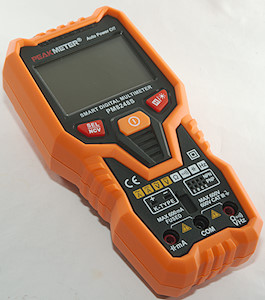
This is a DMM with most common function and fully automatic, i.e. it has no range and function switch.
How well do it work and are there limitations?
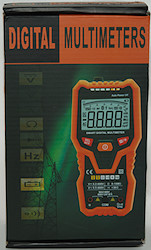

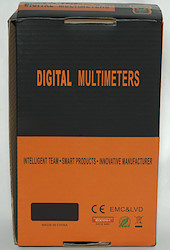

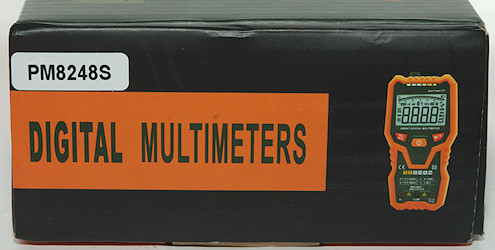
It arrived in a DMM box with a image of the meter without brand.
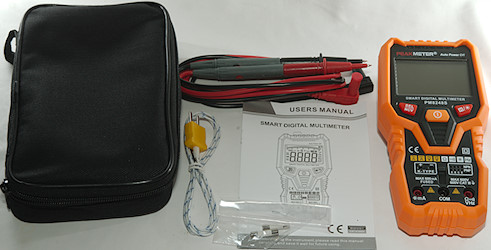
It included the DMM, a pair of probes, a thermocoupler, spare fuses, a bag and a manual.

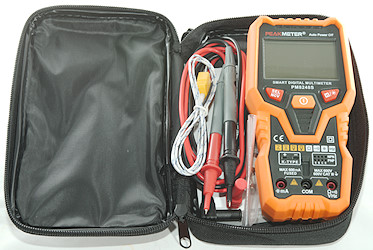
Everything fits in the bag.


The probes has removable tip covers. The CAT rating is marked on the tip and will change when the cover is removed.

With tip cover: CAT III-1000V, CAT IV-600V, without tip cover: CAT II-1000V (This is the usual marking on probes).
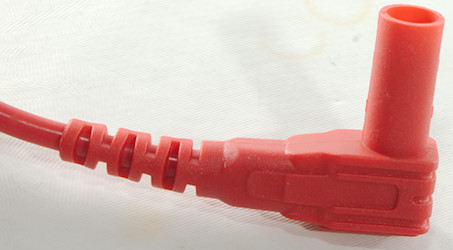
The plug is fully shrouded and a bit shorter than standard probes.
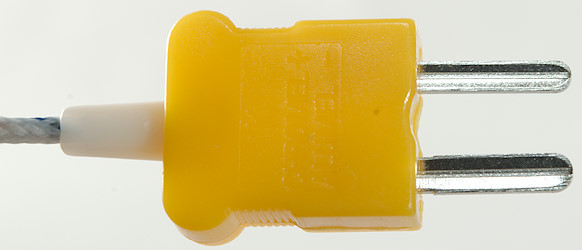

The meter includes a cheap thermocoupler.
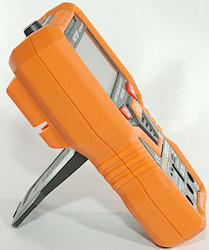
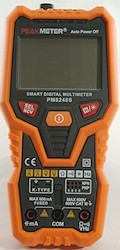
The tilting bale is stable enough to use the buttons.
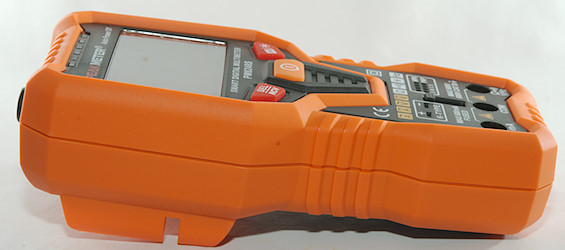
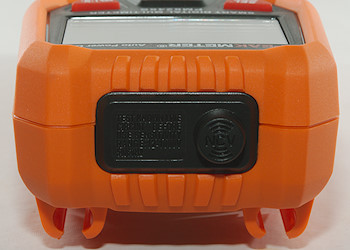
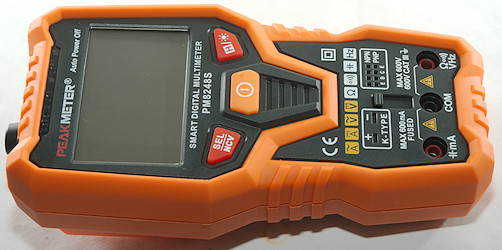
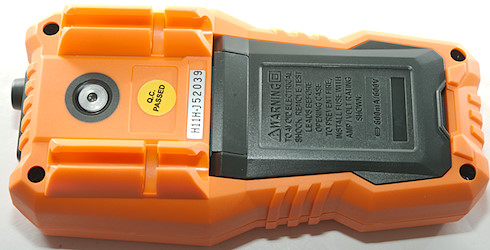
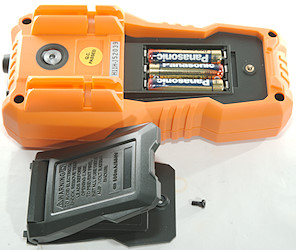
Display
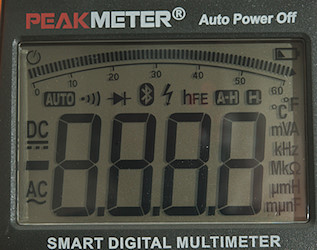
The meter shows all segments during power on.
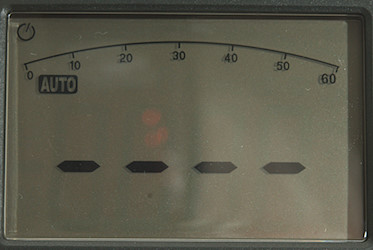
Meter is waiting for something to measure.
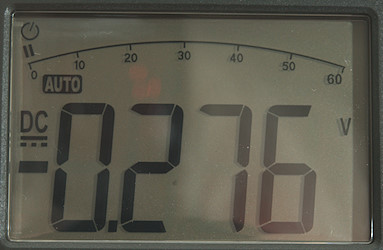
Typical display during usage, it will show the number and what measurement is selected.
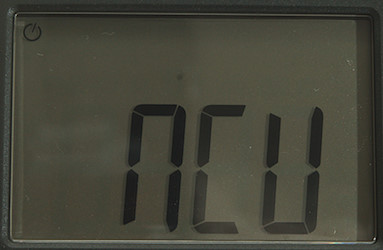

When using the NCV detector the display will show NCV and the green leds on top will show the strength (There are only 3 steps, see tear-down), there are also sound effect from the buzzer when a electric field is detected.
Functions
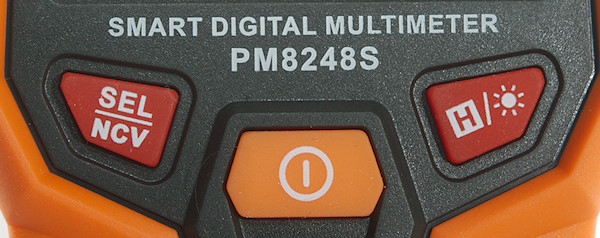
Buttons:
- SEL/NCV: Holding the button down will engage the NCV mode, but only as long as the button is pressed. The SEL function is used when measuring AC to select frequency display and when measuring temperature to select between Celsius and Fahrenheit.
 : Turn the meter on or off.
: Turn the meter on or off.
 : Freezes the display, press again to release. Hold down to turn backlight and flashlight on.
: Freezes the display, press again to release. Hold down to turn backlight and flashlight on.
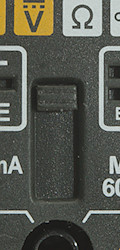
This slider switch moves a cover between termocoupler/transistor-tester and input terminals. This prevents having anything in the holes when measuring voltage, this is good for safety.
Input
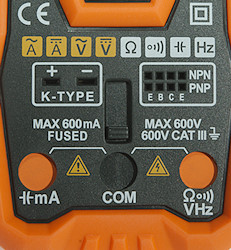
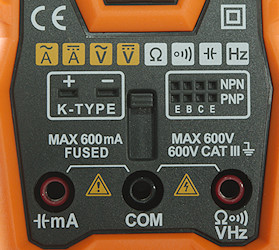
Due to the auto selection the meter will apply a pulsed low voltage on terminals.
- K-Type: Thermocoupler input with a real thermocoupler connector (nice).
- NPN/PNP: Transistor tester, not a very useful function.
- mA: Current input and capacitor tester input.
- CON: The common terminal for all ranges.
- xxx: Voltage and ohm range.
Measurements
- Volt and frequency
- Frequency counter only works when in AC, i.e. zero crossing is required.
- At 1Vrms input frequency range is from 31Hz to 900Hz
- At 5Vrms input frequency range is from 31Hz to 1kHz
- Meter switches to AC at 31Hz, below DC is assumed.
- Input impedance is 10-11Mohm on DC and AC
- Bargraph is same speed as numeric display.
- 5 VAC is 5% down at 240Hz
- Combined AC+DC will be shown as a combined value, but precision is not that good.
- Rated input protection is 600V DC/AC
- Current
- A hand near the V input socket may change from current to voltage temporary.
- Minimum current is 5mA
- Rated input protection is 600mA/600V 5x20mm fuse
- Ohm, Continuity, diode and capacitance
- Ohm needs about 3s to measure 100ohm
- Ohm is -1.4V open and 0.28mA shorted, it uses negative voltage!
- Continuity is slow in speed (About 600ms), auto ranging slows it down.
- Continuity beeps continues when resistance is below 20ohm, and beeps intermittently when resistance is below 42ohm.
- Continuity is -1.4V open and 0.28mA shorted, it uses negative voltage!
- 4000uF takes about 14 seconds to measure.
- Rated input protection is 600V DC/AC
- Miscellaneous
- Current consumption of meter is 4.5mA (56mA with backlight and flashlight)
- Meter turns off at 1.8V on battery, battery symbol show at 3.6V.
- Reading will change dramatically when battery voltage is low. From 3.2 to 2.2 it will change from 5.004 to 10.40V
- Backlight brightness will vary with voltage, but is works below 2.7V
- The meter usual need one or two display updates to reach the final value.
- Viewing angle is fairly good, except from the top
- Display updates around 2 times/sec
- Bargraph follows display updates in speed.
- Backlight and flashlight turns on together.
- Backlight and flashlight will automatic turn off in about 10 seconds.
- Will automatic turn power off in about 10 minutes.
- Standard probes fits in sockets.
- Weight is 287g without accessories, but with batteries.
- Size is 168 x 83 x 51mm.
- Probes
- Probe resistanse 38mOhm for one.
- Probe wire is soft and 102cm long.

A look at the capacitance measurement waveform.
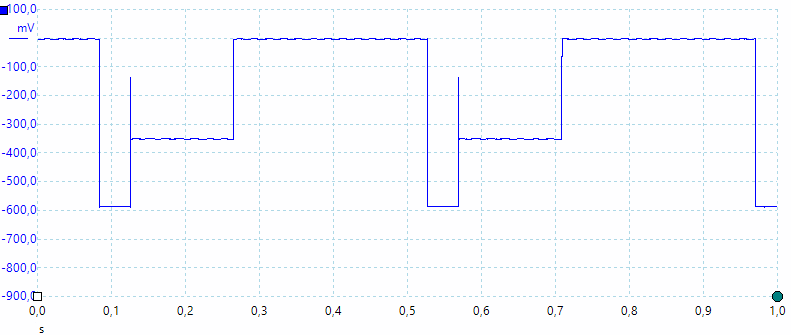
With auto mode selection, the meter always tries the different modes, i.e. ohm is only active some of the time. The above is measured with a 10kOhm resistor across the ohm input.

The mF range gives wrong value when measuring above 4000uF
Combined AC/DC voltage shows neither value, but something near the combined value.
Limits
Due to the automatic selection there must be a minimum value on the input to be detected, this is the rated values:
Current: Minimum 5mA
DC Voltage: Minimum 0.2V
AC Voltage: Minimum 0.5V
Capacitance: Minimum 1nF
Tear down
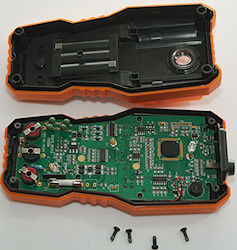
Four screws and the back could be removed.
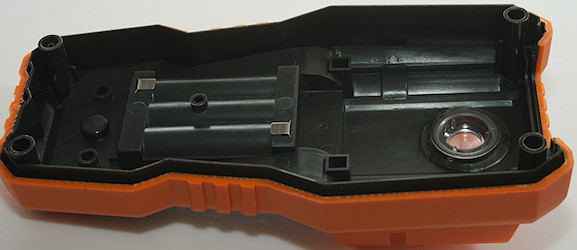
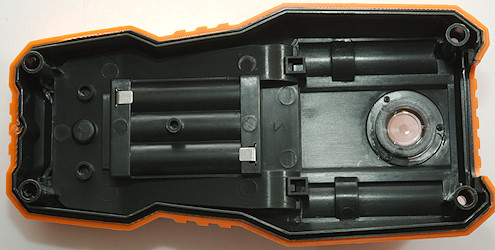
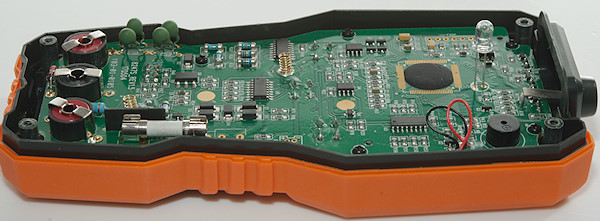
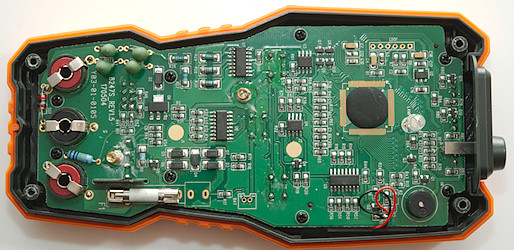
As usual the circuit board is shaped to fit the box.
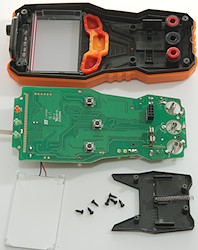
8 small screws and I could remove the circuit board and part of the front of the multimeter
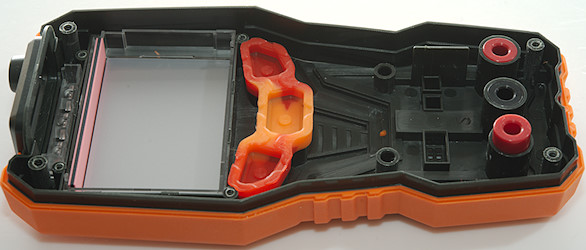
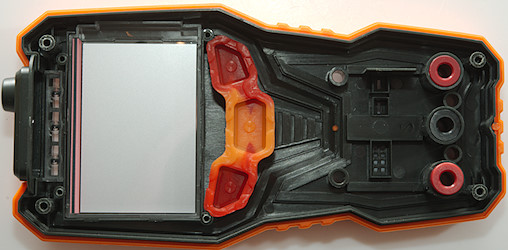
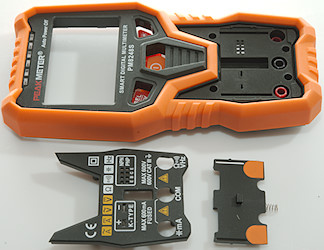
The shutters are mounted on the front, but tied to the circuit board with two screws.
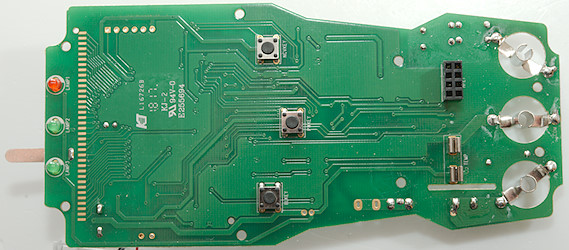
On this side of the circuit board is the switches and they are real switches. There is also the socket for the transistor tester and the connector for the thermocoupler. For good thermocoupler response a temperature sensor is needed very close to this socket, I cannot see any on either side of the circuit board.
The scale for NCV is only 3 leds and not 6 as the enclose looks like.

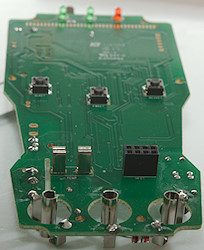
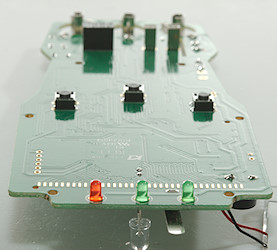
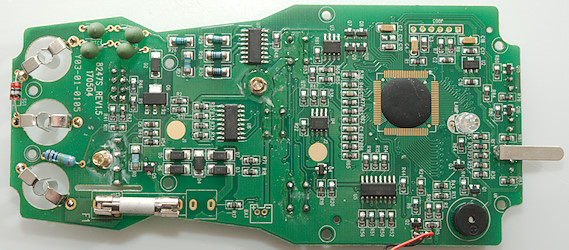
The meter has two sets of input protection PTC's (PTC1..PTC4), one of the sets goes to the 10Mohm input divider (R26+R27), the other goes to a diode (D2) and a big transistor (Q6: BSP300: 800V FET transistor), it is probably used to switch in the ohm range.
The current range has the usual diode protection (D3..D7), with a transistor (Q5) to switch in the shunt (R0).
The handle all the automatic range switching this meter has a couple of analog switches (U5, U7, U8: SGM4582). There is two dual OpAmps (U3, U4, A42S/LM158).
Some of the transistors looks like protection pairs (Q7, Q8 & Q9, Q10), there is also the switches for backlight (Q2), flashlight (Q3) and buzzer (Q1). The NCV scale is controlled from some transistors at the top (Q15, Q16, Q17) near the top. Near the flashlight is a voltage regulator (U2: BL8503).
The NCV antenna (RF1) is a piece of metal sticking out at the top.
But I do not like the Spark gab (SG1) across the input terminals, it is fine for handling small transients, but larger ones will blow it up. To be safe it must be mounted on the other side of the PTC's.

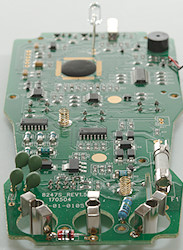
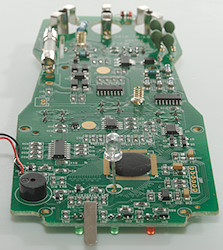

Conclusion
The automatic function/ranging is a novelty feature, but not that useful, because it limits the available ranges significantly. The protection looks fairly good, except SG1 is mounted in the wrong location, this makes me doubt the CAT rating.
It is nice with a real thermocoupler connector, but it is lacking temperature compensation, this is probably mounted inside the multimeter IC. The NCV scale is a bit of a cheat with 6 markings, but only 3 leds.
Also remember never to use this meter if it shows low battery!
Comparing to a normal auto ranging meter the only real automation on this meter is automatic voltage/ohm/continuity (No diode test), everything else requires moving a plug or pressing a button at the right time.
Notes
How do I review a DMM
More DMM reviews
 : Turn the meter on or off.
: Turn the meter on or off.
 : Freezes the display, press again to release. Hold down to turn backlight and flashlight on.
: Freezes the display, press again to release. Hold down to turn backlight and flashlight on.




























 : Turn the meter on or off.
: Turn the meter on or off.
 : Freezes the display, press again to release. Hold down to turn backlight and flashlight on.
: Freezes the display, press again to release. Hold down to turn backlight and flashlight on.























